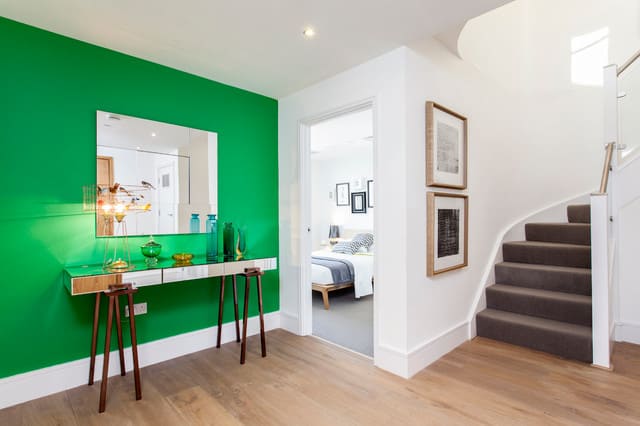Dark hallways can often feel unwelcoming and cramped, significantly impacting the overall ambiance of your home. Fortunately, with a few strategic adjustments and design tricks, you can transform even the darkest hallway into a bright, inviting passage. This article explores ten practical tips to bring light and life to your dark hallways, ensuring they become a pleasant part of your living space.
1. Maximize Natural Light
Natural light is the most effective way to brighten any space. If your hallway has access to windows, ensure they are unobstructed to allow maximum sunlight to stream in. Use light, sheer curtains instead of heavy drapes, which can block out precious light. If structural changes are an option, consider installing a skylight or additional windows to enhance natural illumination.
2. Opt for Light-Colored Paint
Color plays a crucial role in reflecting light. Painting your hallway in light hues such as whites, creams, or soft pastels can significantly brighten the space. These colors reflect more light than darker shades, making the hallway appear larger and more inviting. For added depth and interest, you can use a slightly darker shade on the trim or create an accent wall.
3. Strategic Lighting Fixtures
Installing the right lighting fixtures is essential. Overhead lighting, such as recessed lights or elegant chandeliers, provides general illumination. Complement these with wall sconces placed at regular intervals along the hallway. For a modern touch, consider LED strip lighting along the baseboards or ceiling. These layers of light work together to eliminate shadows and brighten the entire area.
4. Mirrors and Reflective Surfaces
Mirrors are fantastic for enhancing light and creating the illusion of space. Place a large mirror at the end of the hallway or use several smaller mirrors on one wall to reflect light throughout the area. Reflective surfaces, such as glossy paint finishes or glass accents, can also help distribute light more evenly, making the hallway feel brighter and more open.
5. Open Up the Space
If your hallway feels cramped, consider removing non-load-bearing walls or widening doorways to open up the space. Even replacing solid doors with glass-paneled ones can allow light to flow more freely between rooms, brightening the hallway. If structural changes are not feasible, using open shelving instead of closed cabinets can also make the hallway feel less confined.
6. Use Light Flooring
Flooring can have a significant impact on the brightness of your hallway. Opt for light-colored materials such as pale wood, light tiles, or even whitewashed floorboards. If replacing the floor is not an option, a light-colored runner or rug can achieve a similar effect, adding warmth and brightness to the space.
7. Incorporate Artwork and Decor
Decorating your hallway with light-colored or reflective artwork can further enhance the brightness. Choose pieces with bright colors, metallic frames, or glass elements to reflect light. Additionally, placing a few potted plants can bring life and a sense of freshness, contributing to a brighter atmosphere.
8. Declutter and Simplify
A cluttered hallway can feel even darker and more oppressive. Keep the space tidy and organized by minimizing the number of items stored in the hallway. Use sleek, minimalist furniture and decor to keep the area feeling open and airy. Built-in storage solutions can help keep belongings out of sight, maintaining a clean and bright look.
9. Add Glass or Open Elements
Incorporating glass elements into your hallway design can significantly enhance the light flow. Glass doors, transoms above doorways, or even glass partitions can help light travel from adjacent rooms into the hallway. Open staircases with minimalistic railings can also allow light to pass through, reducing shadows and creating a brighter environment.
10. Layered Lighting Techniques
Combining different types of lighting can create a well-lit and dynamic space. Use a mix of ambient, task, and accent lighting to eliminate dark corners and highlight architectural features. For example, picture lights can spotlight artwork, while floor lamps can provide soft, indirect light. Dimmer switches allow you to adjust the light levels according to the time of day and the mood you want to create.
Conclusion
Transforming a dark hallway into a bright, welcoming space is not only achievable but can significantly enhance the overall feel of your home. By maximizing natural light, choosing light colors, strategically placing lighting fixtures, and incorporating reflective surfaces and open elements, you can create a hallway that feels spacious and inviting. Remember, the key is to use a combination of techniques tailored to your specific space and preferences. With these ten tips, your hallway can become a bright and pleasant passage that enhances the beauty and functionality of your home.
By following these practical solutions, you can say goodbye to dark, dreary hallways and welcome a brighter, more cheerful environment that makes every passage through your home a delightful experience.


